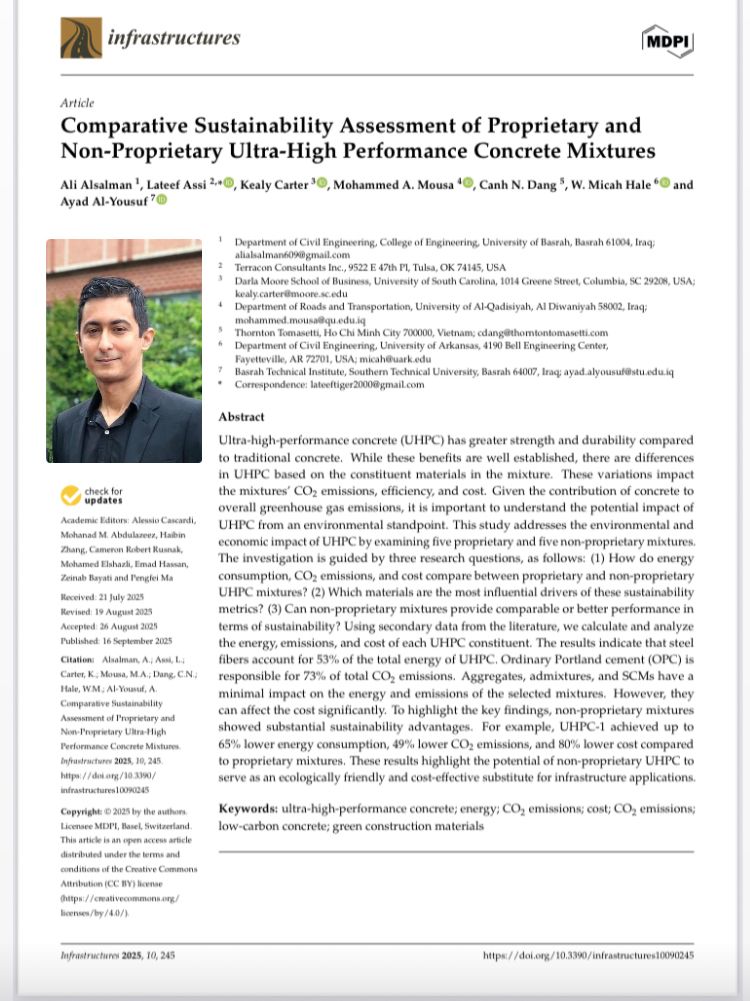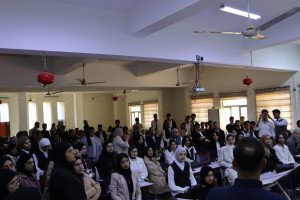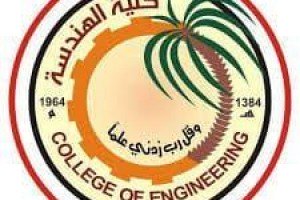
Ali Adnan Muhammad Ali, a faculty member at the College of Engineering, Department of Civil Engineering, University of Basra, published a joint scientific research paper with researchers from international universities in the international journal Infrastructures, which is included in the first quarter of Scopus. The paper is titled "Comparative Evaluation of the Sustainability of Commercial and Non-Commercial Ultra-High-Performance Concrete (UHPC) Mixtures."
The paper includes:
Ultra-high-performance concrete (UHPC) is an advanced construction material characterized by high strength and durability superior to conventional concrete. However, its environmental and economic properties vary depending on the mixture components, which is reflected in energy consumption, carbon dioxide emissions, and cost. Given the significant contribution of concrete to global greenhouse gas emissions, there is a need to evaluate the impact of UHPC from a sustainability perspective.
This study aims to:
Compare energy consumption, carbon dioxide emissions, and cost between commercial and non-commercial mixes.
Identify the materials with the greatest impact on sustainability indicators.
Evaluating the potential of non-commercial mixes to achieve similar or better performance than commercial mixes in terms of sustainability methodology
The research was based on secondary data from the scientific literature. Energy consumption, emissions, and cost were calculated and analyzed for each UHPC component in five commercial and five non-commercial mixes.
The results showed that steel fibers contribute approximately 53% of the total energy consumption, while approximately 73% of carbon dioxide emissions are attributed to ordinary Portland cement (OPC). Aggregates, additives, and supplementary cementitious materials (SCMS) had a limited impact on energy and emissions, but showed a significant impact on cost. The results also showed that non-commercial mixes offered clear advantages; Mix-1-UHPC achieved a reduction of up to 65% in energy consumption, 49% in emissions, and 80% in cost compared to commercial mixes. Conclusions
This study confirms that non-commercial UHPC mixes represent a promising, environmentally friendly, economical, and efficient option for use in sustainable infrastructure applications.







